Welcome to Part 3: The Ultimate FAQ Guide to RV Tires! We’ve come to the end of the digital road, and we’re ready to start the real one.
- You’ve learned how to read a tire placard and tire size sticker.
- You’ve learned the ins and outs of RV tire blowouts.
- Now, you’ll learn (almost) everything else about RV tires. Welcome to headquarters for all your RV tire FAQs.
So sit back, enjoy, and inhale the fine aroma of burnt rubber. Let’s get ready to roll.
Should I Check My Tire Pressure When They’re Cold?
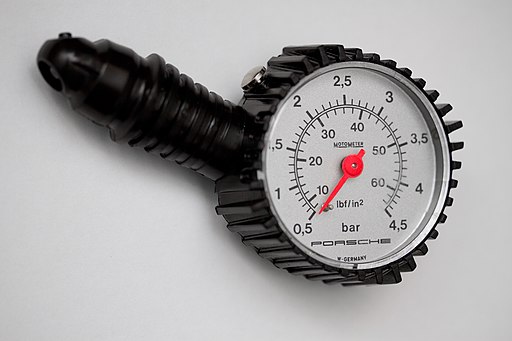
In this instance, cold doesn’t mean store-your-ice-cream-outside-cold.
It means just check your tire pressure in the morning, before you’ve run your rig, and with the tires outside of direct sunlight.
You should always check tire pressure at least once a week. If you’re running your tires close to their limit (less than 10% reserve capacity), check them every day.
Can I Use LT Tires on My Trailer?
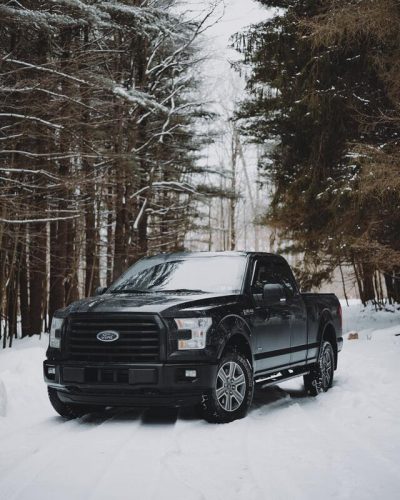
If you’re asking about LT tires because you’re concerned about blowouts, then I recommend you read Part 2 of this series first.
This is a common RV tire FAQ. You’re probably asking for one of three reasons:
- A) You found some half-worn-out truck tires on Craigslist for a song and a dance —
- B) You want to match tires between your trailer and your tow rig so you only have to carry one spare.
- C) You’ve heard you can run LT tires faster than ST tires, and patience was never your virtue.
[If the correct answer is D), you’re interested in the difference in FMVSS standards and testing between ST and LT tires, then we humbly invite you to visit this website for more information.]
Here’s the Golden Tire Rule:
Any replacement tire must be able to support the original MEASURED load or greater.
Now, here’s your first speed bump. For a given tire size, LT tires usually can’t carry what ST tires can.
So if you’re running your tires close to their load limit – and you probably are – then you’ll either have to upgrade to a higher load range or a larger size.
A higher load range means more money.
If you swap sizes, now you might run into a bump clearance problem with the tire and fender wheel well, or maybe the new extra-wide tire rubs against the chassis frame rail.
- You need to leave ~3 inches of bump clearance between your tire and wheel well
- You should have at least ~1 inch between your tire sidewall and any frame member, fastener, etc.
If you want to change away from the factory tire size, I highly recommend calling the manufacturer and asking their opinion. They won’t/can’t give you their blessing, but if their engineering team knows of a specific problem, they’ll probably tell you.
P.S. Don’t run P tires on your camper. If you ignore my advice and do it anyway, remember that you must de-rate the load capacity by about 10%.
For more information on this subject, check out the inestimable Roger Marble at RV Tire Safety.
How Much Do RV Tires Cost?
My friends, this is the 21st century. You can buy a 16-inch pizza from Little Caesars for $5, or you can buy the 24k Pizza from New York City’s Industry Kitchen for $2,700, complete with squid ink and Osetra caviar.
Same rules apply to RV tires. This is one RV tire FAQ I can’t answer for you. Walk away from the too-good-to-be-true bargains. Ignore the gold-flecked models. Just find something with extra cheese a good warranty and reputable longevity.
Should My RV Tires Be Balanced and Rotated?

If you’re driving a motorhome or van, then yes, your tires need to be professionally mounted, balanced, aligned and periodically rotated.
However, suspensions on travel trailers and fifth wheels are much simpler. Generally, no, you don’t need to balance or rotate your tires.*
*This is especially important if you’re towing a double- or triple-axle trailer! RV tires should always be replaced in pairs! Rotating the tires one at a time would go against this rule and increase the likelihood of a blowout.
Unless you’re a full-timer, your RV probably doesn’t get as many miles as your passenger vehicle. Most of the time, RV tires wear out through age, not mileage. Hence why rotation isn’t such a big deal.
A Special Word on RV Tire Alignment
Remember vrooming your favorite Hot Wheel sports car across the floor? Did it roll straight? Probably not. That’s because all four wheels weren’t perfectly aligned with each other.
Alignment orients all your tires in the same direction. When your mechanic aligns your commuter car, he or she will adjust camber, caster and toe.
This is NOT the case with most campers. If your towable has a leaf spring or torsion axle suspension – and most do – then you don’t have much control over caster angles or toe-in. These are set at the design level.
Camber will vary based on the load weight. This is one reason why RV tires tend to be narrower than passenger tires. Varying camber angles have less impact on uneven treadwear.
Where Are RV Tires Made?
Many trailer tires are manufactured overseas, even if the company is US-based. Or France-based, like Michelin. The profit margins just aren’t high enough to support domestic production.
There are exceptions, of course. Goodyear Endurance RV and trailer tires are made in the U.S. But most other US-based manufacturers, like Cooper and BF Goodrich, have abandoned this niche.
Big RV tire brands include:
- Goodyear
- Michelin
- Bridgestone
- Dunlop
- Hankook
- Carlisle
- Westlake

However, RV tire brands have a complicated family tree. It’s a hard RV tire FAQ to answer!
- Goodyear owns Dunlop and a half-dozen foreign entities.
- Michelin owns BF Goodrich.
- Hangzhou Zhongce Rubber Company, the #1 Chinese tire manufacturer, sells under the popular brands Westlake, Arisun, Goodride, and three other brand names.
Add to the confusion that RV manufacturers like to stick with tried n’ true OEM suppliers, like Americana Tire & Wheel Division, owned by Kenda; and Lions Head Tire & Wheel, who imports tires from Weifang Yuelong Rubber Co., Hangzhou Zhongce Rubber Company, and other manufacturers mostly based in China, Vietnam or Taiwan.
TL;DR: If you want to know where your RV tires were made, just look up the DOT factory code on your tire sidewall.
How Do I Store My RV?
This question belongs on this list because you should never store your RV with all its weight on the tires!
Imagine trying to sleep standing up. Now how would you feel??
So you should always store your RV or camper on blocks or, if your camper can handle it, with the stabilizer jacks down and level.
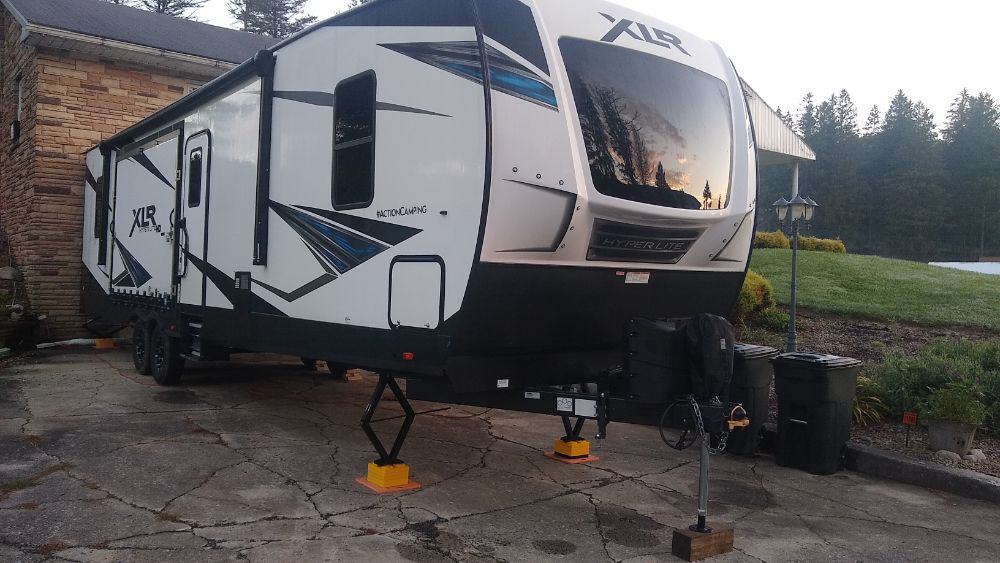
But if you must store your rig with all weight on its wheels, do this:
- Clean off your tires! Remove any salt, grease, gasoline, grime or other contaminants.
- Unload all extra cargo weight from the RV and empty all tanks.
- Inflate all tires to the maximum pressure.*
- Park it. Avoid moving the RV when it’s frigid.
- Move the RV at least once every 3 months to prevent ozone cracking and flat-spotting.
Always store your RV in a clean, cool, dry, sunless area. Avoid extreme heat and cold, and never store your RV where the tires are subjected to direct sunlight.
A Winding Detour Through Goodyear’s Tire Recommendations
I was surprised to read these instructions from Goodyear:
“Inflate tires to recommended operating pressure plus 25%. Ensure that the rim manufacturer’s inflation capacity is not exceeded.”
What?! 25% above pressure! That’s ridiculous! Don’t these engineers read their own stuff?
Then I read a little further …
“Adjust inflation before putting the vehicle back into service.”
Now, I’m not going to argue with Goodyear engineers about their tires .. but speaking for myself, I would never trust myself to follow this rule. I know myself. I have lost enough keys, wallets, ball caps and glasses to stockpile an entire Salvation Army thrift store. I would never remember to deflate the tires before use. If you have a memory like an elephant, feel free to follow Goodyear’s recommendations.
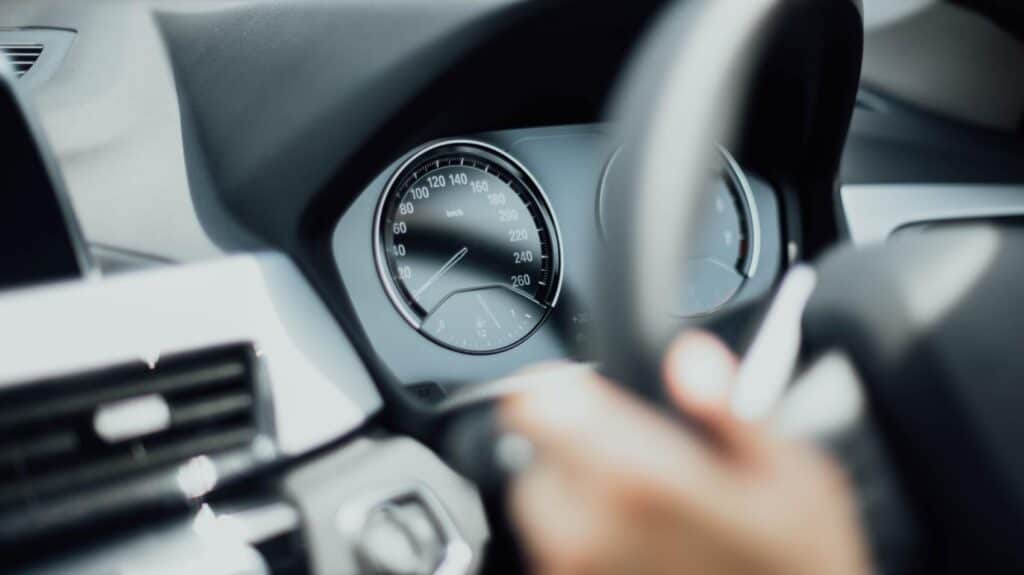
How Fast Can I Tow My Travel Trailer RV?
Asked and answered! I touched on this topic in Part 2: The Ultimate FAQ Guide to RV Tires – Ask the RV Engineer, where we dissected the touchy topic of RV tire blowouts.
Long story short:
- Obey the law!
- Drive what’s safe for YOUR RV, YOUR vehicle, YOUR roads, YOUR conditions, YOUR experience, etc.
- Chances are, if you obey #1 and #2, your maximum speed limit is 65 mph or less.
- If No. 3 does not apply to you, then regardless, an RV should never be driven faster than 75 mph, no matter what the tire speed symbol says.
What Should My RV Tire Pressure Be?
Short answer: When in doubt, run your tires at the inflation pressure indicated on the sidewall of your tire. Don’t know how to read that? Read Part 1: The Ultimate Guide to RV Tires.
Long answer: Read Part 2: The Ultimate Guide to RV Tires, and find the inflation/load index from your tire manufacturer for your tires. Inflate your tires to try to achieve a reserve capacity of 15-25 percent but stay within the maximum tire inflation pressure!
How Old Are My Tires?
Check the DOT code.
How old is too old? Well, tires aren’t like wine or cheese, my friend. The general consensus is that RV tires last 5-7 years if properly stored and exercised.
Again, age is usually more important than mileage. A weekend warrior might only put 8,000 miles on a set of tires before needing replacement. A full-timer might put 25,000 on the same set!
For full-timers, road conditions and reserve capacity have an enormous impact on tire life. If you’re running your tires at their load limit on rough backroads, your tires won’t last half as long as stronger tires rollin’ on the interstate.
All About RV Tire Wear! FAQ’s
Will My Tires Wear Out Without Use?
With enough water and sun, everything wears down over time (just ask the Grand Canyon). Your RV trailer tires are no different. The culprits:
- Exposure to direct sunlight
- Chemical contamination from road salts, gasoline, and petrochemicals
- Hot storage temperatures
- Exposure to automotive exhaust gases
Oxidation causes the notorious “dry rot” or “alligator cracking” so common on older recreational vehicles.
To prevent premature RV tire and trailer tire wear:
- Cover your wheels when not in use
- Drive your trailer or RV at least once every six months
- Store your rig indoors or under a shelter
- Clean the tires after every trip
P.S. Note that “Wiping an expensive tire protectant on my tires” is not listed! Trailer tires have waxes that self-lubricate the tire when flexed (that’s one reason why driving every few months is so important). Protectants lend a nice shine, but they’re often only skin-deep.
How to Check Your Trailer Tires For Wear
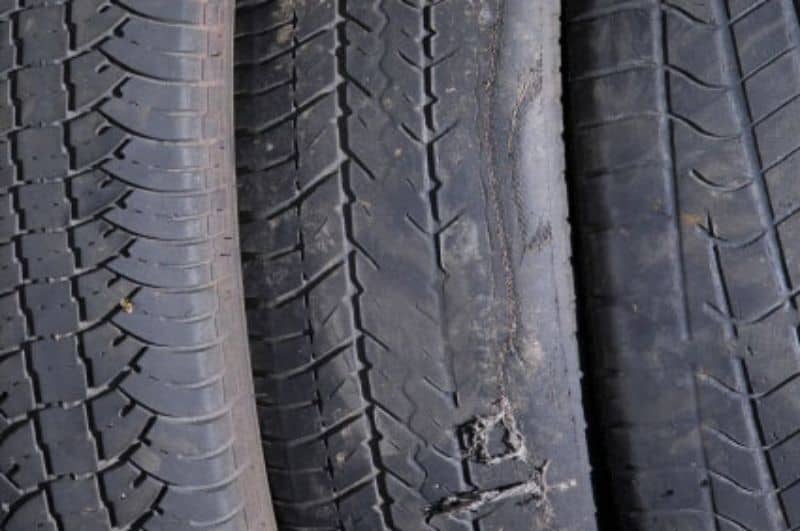
How should you check the minimum tread depth on your worn-out trailer tires?
You could just visually inspect the wear bars crossing the tire treads horizontally. If the tread is as low as these bars, the tires must go. Or believe me, when you least expect them, they’ll “go”!
It (almost) goes without saying that even if only one side of your tire is worn, the wear bar test applies to the whole thing.
Your dad’s test (who got it from his dad) was to insert a penny with Lincoln’s comb-over head-first into the tire groove. If you could see all of Lincoln’s head, your tire had less than 2/32 inch of tread depth – the DOT-legal minimum – and should be replaced.
But what if you use someone else’s head? What about a nickel, dime, or quarter?
A dime, being smaller than a penny, is considering cheating. It’s a fast way to cause fishtailing on a rainy or snowy day.
If you want a safe towable trailer, there’s no better choice than George Washington, Esquire. If you can see all of his head, you have 4/32-inch of tread left. And according to a survey conducted by Tire Rack reported by Motor Trend, that’s the best tread thickness for the job.
P.S. Fun fact: In Canada, they use Queen Elizabeth’s head.
Why Are My Trailer Tires Wearing Unevenly?
I have two resources for your sampling:
If you’re driving a motorhome or van, check out this PDF from BF Goodrich:
Since they ride on multi-link automotive suspensions, motorhomes and vans can be plagued by all the same tire alignment and wear issues as a regular passenger vehicle. Thankfully, these suspensions can also be adjusted for better alignment.
If you’re driving a towable, check out this image from Etrailer.com:
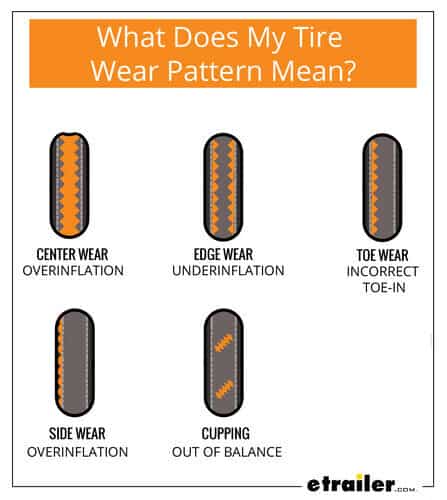
These suspensions are much simpler. Therefore, when it comes to trailer tire wear, you really don’t have that many options.
- Ensure your tires are inflated correctly
- Weigh your RV and ensure it’s within the GVWR
- Equally distribute the RV weight side-to-side
P.S. Certain off-road trailers might use Flex-Ride, Timbren Axle-Less, or other speciality suspensions. Some of these independent suspensions allow you to adjust camber or toe-in using shims or screws.
How Do I Dispose of RV Tires?
Do not, under any circumstances, drive to the nearest wooded farm lot and chuck your tires into its murky depths. That’s for Christmas trees, not tires.
Do not burn tires. Every time you do, an angel loses his wings. If you want the full list of awful consequences from burning tires, read this and weep.
Dispose of your tires responsibly by delivering them to your local automotive repair shop.
But Andy, What About My Lift Kit?
If you’re already a tire geek, you’re probably spewing bagel crumbs at the screen and yelling at me right now.
“He never mentioned siping patterns or air bag suspensions! What about wheel offset? This RV Tire FAQ ultimate guide. is. sh*t!”
Calm down! If you’re a 4×4 aficionado, then this article has barely plumbed the depths of tire upgrade options: wheel offsets, bolt patterns, how to pack a trailer wheel bearing, EZ-lube vs NEV-R lube, wheel tracking, etc.
In the meantime, let’s go camping!
Did you miss it??
… for critical information about how to prevent a tire blowout.
Leave a Reply